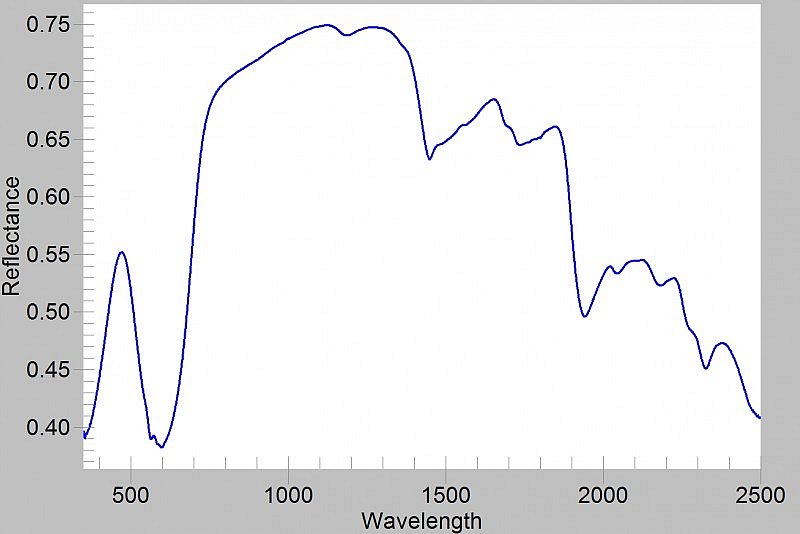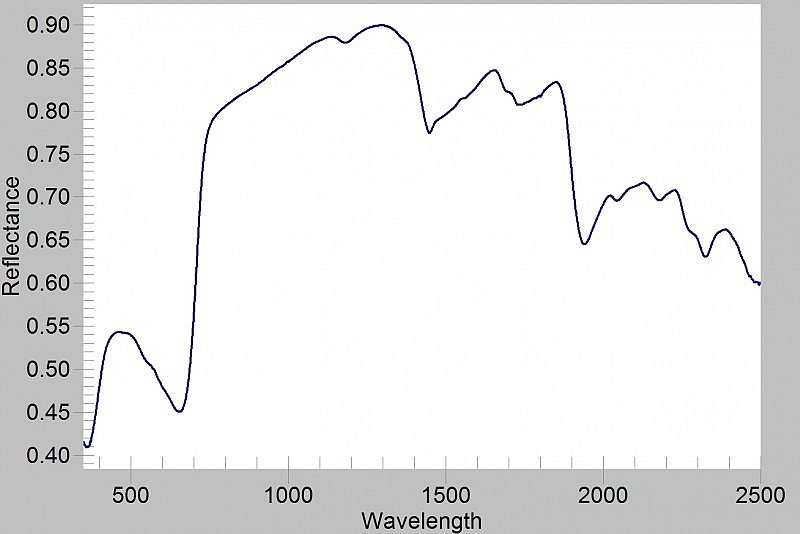Modern interventions
Artists' Materials
Three folios were analysed in the latter portion of the manuscript, which sustained the heaviest damage during the 19th-century flood, in order to establish whether the images were restored subsequently. No modern pigments were detected, but some indications of possible retouching did emerge. Notably, on fol. 271v the white bed sheets are shaded in blue with ultramarine, while the white curtains on the same page are shaded with indigo – a unique occurrence of two different blue pigments used to shade white areas on the same page. A small area on fol. 284v appears especially bright under UV illumination; observation under magnification reveals a transparent layer, likely organic, which covers the original paint and may be a trace of a past ‘conservation’ treatment. Finally, two robes on fol. 281r are of a much deeper pink colour than is found on other pages. While their composition is not in any way ‘suspicious’, as they contain no modern pigments, their different colour may suggest that they were not part of the original campaign of decoration.


Joachim and Anna, the Virgin’s Nativity (Collects, sermons and lessons for the Nativity of the Virgin)
Joachim and Anna pray for a child in the upper part of the initial S. Below, Anna reclines in bed as the midwives give the newborn Virgin her first bath. The image was painted by Hand D.
The page suffered water damage during the 19th century. Technical analyses did not identify any modern pigments, but an unusual occurrence may be indicative of partial restoration. The white bed sheets on which Anna lies are shaded in blue with ultramarine (hotspot 1), while the white curtains above are shaded with indigo (hotspot 2) – a difference in modelling technique not observed on any other page.